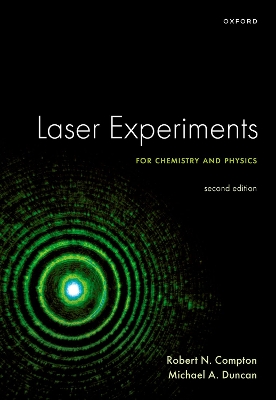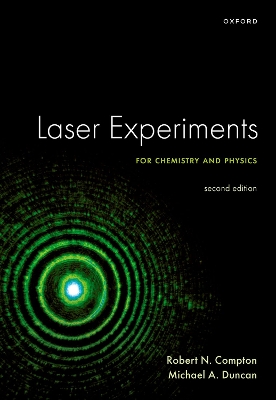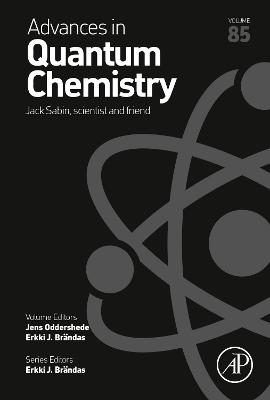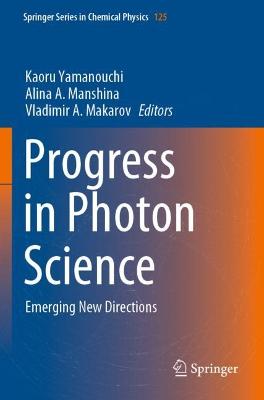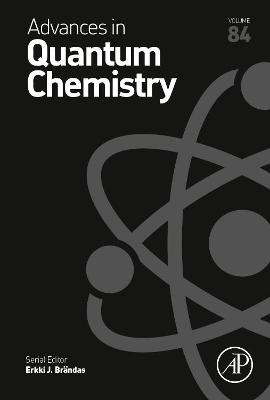Advances in Quantum Chemistry
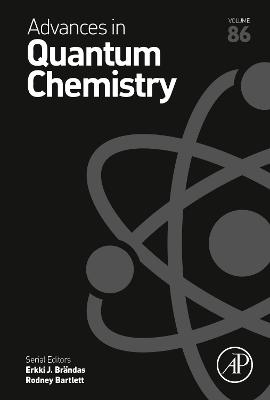 portes grátis
portes grátis
Advances in Quantum Chemistry
Bartlett, Rodney J.; Braendas, Erkki J.
Elsevier Science Publishing Co Inc
10/2022
340
Dura
Inglês
9780443186653
15 a 20 dias
660
Descrição não disponível.
1. Can orbital basis sets compete with explicitly correlated ones for few-electron systems? Krzysztof Szalewicz 2. Converging high-level equation-of-motion coupled-cluster energetics with the help of Monte Carlo and selected configuration interaction Piotr Piecuch 3. Coupled cluster downfolding techniques: a review of existing applications in classical and quantum computing for chemical systems Karol Kowalski 4. Multi-reference methods for the description of dynamic and nondynamic electron correlation effects in atoms and molecules Leszek Meissner 5. Exploring the attosecond laser-driven electron dynamics in the hydrogen molecule with different TD-CI approaches Aleksander Wozniak 6. Molecular systems in spatial confinement: variation of linear and nonlinear electrical response of molecules in the bond dissociation processes Wojciech Bartkowiak 7. Relativistic Infinite-order two-component methods for heavy elements Maria Barysz 8. Second quantized approach to exchange energy revised - beyond the S^2 approximation Piotr Zuchowski 9. Calculating atomic states without the Born-Oppenheimer approximation Monika Stanke 10. Convergence of the Correlated Optimized Effective Potential Method Szymon Filip Smiga 11. Generalized Relaxed Excitation with a Non-integer Particle and Hole Charge as an Excitation Order Katarzyna Pernal 12. Vanadium - based Materials for Catalytic Applications: Insight from Density Functional Theory Malgorzta Witko 13. Electronic convection in coherent information-theoretic description of molecular states Roman F. Nalewajski 14. Interparticle correlations and chemical bonding from physical side: Exact diagonalization combined with ab initio wave function adjustment Jozef Spalek and Ewa Broclawik 15. ETS-NOCV and Molecular Electrostatic Potential-based Picture of Chemical Bonding Artur Michalak 16. Electrostatic Embedding for Elongation Cutoff Technique - Method Accuracy Jacek Korchowiec 17. From the Kolos-Wolniewicz calculations to the quantum-electrodynamic treatment of the hydrogen molecule: competition between theory and experiment Jacek Komasa 18. Making symmetry-adapted perturbation theory more accurate Konrad Patkowski and Tatiana Korona 19. Advanced models of coupled cluster theory for the ground, excited and ionized states Monika Musial and Stanislaw Kucharski
Este título pertence ao(s) assunto(s) indicados(s). Para ver outros títulos clique no assunto desejado.
Complex optical potential; Correct boundary conditions; Critical minima; Decoherence; Density matrix; Derivative estimations; Dirac partial wave Analysis; Double charge exchange; Electron and positron scattering; Fast Fourier transform; Fast Pade transform; Hawking radiation; High impact energies; Negentropy; NMR Spectroscopy; Nuclear structure approaches; Ovarian tumor; Quantum Darwinism; Sherman function
1. Can orbital basis sets compete with explicitly correlated ones for few-electron systems? Krzysztof Szalewicz 2. Converging high-level equation-of-motion coupled-cluster energetics with the help of Monte Carlo and selected configuration interaction Piotr Piecuch 3. Coupled cluster downfolding techniques: a review of existing applications in classical and quantum computing for chemical systems Karol Kowalski 4. Multi-reference methods for the description of dynamic and nondynamic electron correlation effects in atoms and molecules Leszek Meissner 5. Exploring the attosecond laser-driven electron dynamics in the hydrogen molecule with different TD-CI approaches Aleksander Wozniak 6. Molecular systems in spatial confinement: variation of linear and nonlinear electrical response of molecules in the bond dissociation processes Wojciech Bartkowiak 7. Relativistic Infinite-order two-component methods for heavy elements Maria Barysz 8. Second quantized approach to exchange energy revised - beyond the S^2 approximation Piotr Zuchowski 9. Calculating atomic states without the Born-Oppenheimer approximation Monika Stanke 10. Convergence of the Correlated Optimized Effective Potential Method Szymon Filip Smiga 11. Generalized Relaxed Excitation with a Non-integer Particle and Hole Charge as an Excitation Order Katarzyna Pernal 12. Vanadium - based Materials for Catalytic Applications: Insight from Density Functional Theory Malgorzta Witko 13. Electronic convection in coherent information-theoretic description of molecular states Roman F. Nalewajski 14. Interparticle correlations and chemical bonding from physical side: Exact diagonalization combined with ab initio wave function adjustment Jozef Spalek and Ewa Broclawik 15. ETS-NOCV and Molecular Electrostatic Potential-based Picture of Chemical Bonding Artur Michalak 16. Electrostatic Embedding for Elongation Cutoff Technique - Method Accuracy Jacek Korchowiec 17. From the Kolos-Wolniewicz calculations to the quantum-electrodynamic treatment of the hydrogen molecule: competition between theory and experiment Jacek Komasa 18. Making symmetry-adapted perturbation theory more accurate Konrad Patkowski and Tatiana Korona 19. Advanced models of coupled cluster theory for the ground, excited and ionized states Monika Musial and Stanislaw Kucharski
Este título pertence ao(s) assunto(s) indicados(s). Para ver outros títulos clique no assunto desejado.
Complex optical potential; Correct boundary conditions; Critical minima; Decoherence; Density matrix; Derivative estimations; Dirac partial wave Analysis; Double charge exchange; Electron and positron scattering; Fast Fourier transform; Fast Pade transform; Hawking radiation; High impact energies; Negentropy; NMR Spectroscopy; Nuclear structure approaches; Ovarian tumor; Quantum Darwinism; Sherman function


